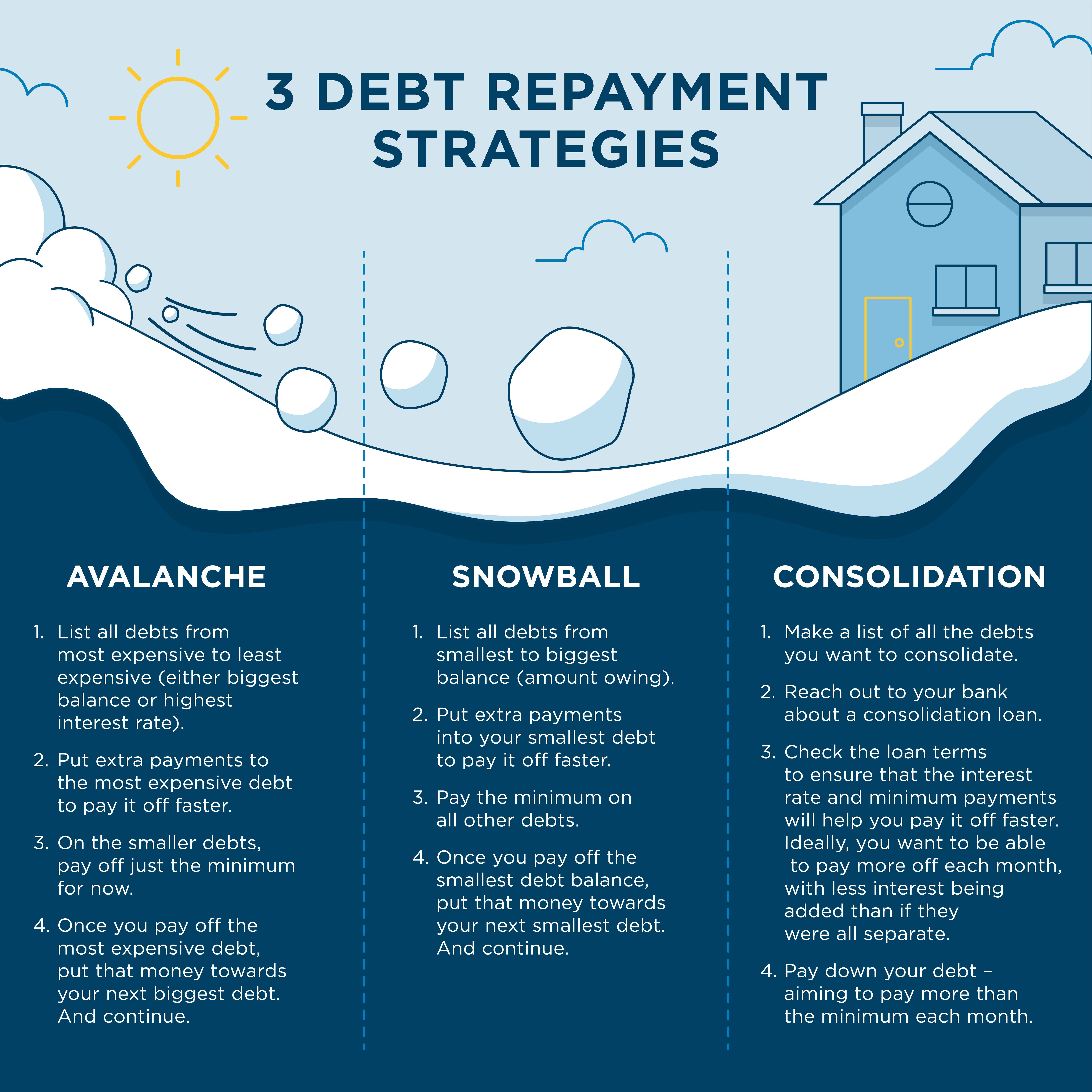Fraud protection.
Now it's personal.
ANZ Falcon® technology monitors millions of transactions every day to help keep you safe from fraud.
Falcon® is a registered trademark of Fair Issac Corporation.
Where to begin? Strategising your way out of debt can feel complicated. That’s why we’ve got three simple strategies to get you started.

![]()
List your debts including the balance left to pay, the interest rate and your monthly minimum payment. Taking this little action is the first step to tackling them – and avoid something called the Ostrich Effect (our tendency to ignore things that feel too big or hard).
To feel confident your debts are getting ticked off, put your repayments into your budget. Your budgeting priorities should generally be things you need to survive, your debts, your savings, and then whatever else you like. The good news is that once the debt has been wiped you will have some extra money that you can start paying off another debt or adding to your savings to achieve your goals in record time.
![]()
Turn your monthly interest rates into hard dollar amounts to see what you actually owe on each loan. This can help you see how much extra interest you’re paying on top of the principal, so you can work out which debt to prioritise. It's ideal to pay the debt with the highest interest in dollar terms, so think about prioritising that one.
![]()
If you choose to pay off your debt based on the highest amount of interest you’re being charged, the table below illustrates how you could prioritise your debts. As you can see, just because a loan is bigger, it doesn’t mean it should necessarily be the top priority.
| Debt name | Total owing |
Monthly repayment |
Interest rate |
Interest charged |
Priority |
|---|---|---|---|---|---|
| Credit Card | $5,000 | $125.54 | 16.99% | $849.50 | 2 |
| Personal Loan | $8,000 | $228.60 | 12.99% | $1039.20 | 1 |
| Car loan | $10,000 | $254.63 | 7.4% | $740.00 | 3 |
Figures, rates and prioritisation rankings are for illustrative purposes only. Please check your details carefully and seek advice if you need help.
![]()
We tend to avoid considering difficult to assess attributes in decision making and substitute them with easier ones. This is known as attribute substitution (PDF) and means we might take the easiest route even if it won’t be the best for us in the long term. In this case, we might not understand how interest compounds over time and so might choose to prioritise debts with bigger monthly repayments or smaller balances even if it will mean we’ll pay off more in the long run.
![]()
Focus on your most expensive debt first – which might mean the one with the biggest interest rate or the one with the highest dollar repayment value. Pay just the minimum on all your other debts, and put every extra dollar you can spare into clearing that expensive one. Once that has been wiped, you move on to your next most expensive debt, and so on.
Basically the reverse of the avalanche. Rather than focusing on your most expensive debt, focus on the smallest. With each small debt you pay off, you save a little more until you can progressively make larger payments on your remaining debts.
Seeing your list of debts go down rapidly can feel quite rewarding and motivating, which can help you keep things moving. The downside to this method is that those expensive debts may be getting bigger in the background. Sneaky.
If you’re grappling with lots of small debts, then consolidation (under a single personal loan or credit card ) may be an option. The good thing about consolidation is that it can take advantage of promotional offers to reduce the amount of interest you’re paying. Plus it makes managing your debts a whole lot easier with the one payment.
But this isn’t magic – you shouldn’t consolidate multiple debts just so you can borrow more money, otherwise you might wind up right where you started. Before consolidating or taking out any new products, always check the T&Cs, fees and charges and eligibility criteria, to work out whether it’s the right option for you and your circumstances.

Got more debt than your budget can handle? Get in touch with your bank and see if they can help with financial advice, consolidation or hardship support (if you’re an ANZ customer we can help you here).
![]()
We like to do what we’ve always done – even when we know we need to change our behaviour. This means that the inertia of parting with money (loss aversion) and changing current situation may make it tough to manage debt. When it comes to debt, you could set up automatic payments where a certain amount would go to your debt repayment as soon as you get paid so that you don’t need to take the action yourself.
![]()
The information set out above is general in nature and has been prepared without taking into account your objectives, financial situation or needs. Before acting on the information, you should consider whether the information is appropriate for you having regard to your objectives, financial situation and needs. By providing this information ANZ does not intend to provide any financial advice or other advice or recommendations. You should seek independent financial, legal, tax and other relevant advice having regard to your particular circumstances.
Any tools, checklists or calculators produce results based on the limited information you provide so they are an estimate or guide only. As they are incomplete, they are not a substitute for professional advice. Please refer to the tool for more information.